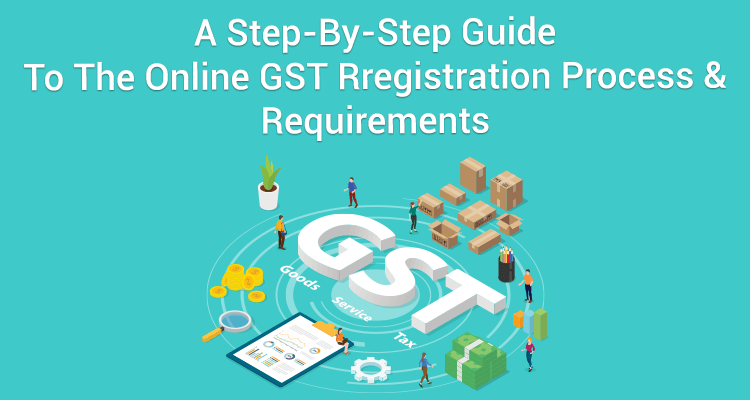
Understanding the GST Registration Process
Introduction to GST
In today’s global economy, it’s imperative for businesses to navigate the complexities of taxation efficiently. Goods and Services Tax (GST) is a significant step towards creating a unified tax structure in India. GST is a comprehensive indirect tax levied on the supply of goods and services across the country, aimed at replacing various indirect taxes levied by the state and central governments.
The Importance of GST Registration
GST registration is a fundamental requirement for businesses operating in India. It is mandatory for businesses with an annual turnover exceeding a specified threshold to register under GST. This registration facilitates seamless compliance with tax regulations and enables businesses to avail themselves of input tax credits.
Eligibility Criteria for GST Registration
Turnover Threshold
Businesses with an annual turnover exceeding Rs. 40 lakhs (Rs. 10 lakhs for northeastern and hill states) are required to register under GST. Additionally, certain categories of businesses, such as e-commerce operators and entities engaged in the supply of goods or services across state borders, are also obligated to register under GST, irrespective of their turnover.
Voluntary Registration
Even if a business’s turnover falls below the prescribed threshold, it can opt for voluntary registration under GST. Voluntary registration offers several advantages, including credibility, eligibility to claim input tax credits, and compliance with interstate transaction requirements.
The GST Registration Process
Step 1: Gather Required Documents
Before initiating the GST registration process, businesses need to ensure they have the necessary documents handy. These documents typically include PAN card, Aadhar card, proof of business ownership or constitution, bank account details, and address proofs.
Step 2: Online Registration
GST registration is primarily an online process facilitated through the GST portal. Businesses need to visit the GST portal (www.gst.gov.in) and navigate to the ‘Services’ section to initiate the registration process.
Step 3: Fill Application Form
Upon accessing the GST portal, businesses are required to fill the GST registration application form (GST REG-01) with accurate details pertaining to their business activities, turnover, and other relevant information.
Step 4: Verification and Validation
Once the application form is submitted online, it undergoes verification and validation by the GST authorities. This may involve scrutiny of the submitted documents and cross-verification of the provided information.
Step 5: Issuance of GSTIN
Upon successful verification, the Goods and Services Tax Identification Number (GSTIN) is issued to the business entity. GSTIN is a unique 15-digit alphanumeric code assigned to each registered taxpayer, serving as a primary identifier for all GST-related transactions.
Step 6: Post-Registration Formalities
After obtaining GSTIN, businesses are required to comply with various post-registration formalities, including the issuance of GST-compliant invoices, maintenance of accurate records, filing of periodic GST returns, and payment of applicable taxes within the stipulated timelines.
Conclusion
In conclusion, GST registration is a crucial aspect of tax compliance for businesses operating in India. By understanding the eligibility criteria and following the prescribed registration process diligently, businesses can ensure seamless compliance with GST regulations and leverage the benefits of a unified tax regime.
GST registration documents required:
Certainly! When applying for GST registration, you’ll need to gather several documents to complete the process smoothly. Here’s a comprehensive list of documents required for GST registration:
- Proof of Identity:
- PAN Card of the Applicant: The Permanent Account Number (PAN) card of the individual or entity applying for GST registration is mandatory.
- Aadhaar Card: Aadhaar card serves as proof of identity and address for Indian residents. It is required for individual applicants.
- Proof of Business Ownership or Constitution:
- Certificate of Incorporation: In the case of companies, Limited Liability Partnerships (LLPs), or other corporate entities, the certificate of incorporation issued by the Registrar of Companies (ROC) is necessary.
- Partnership Deed: For partnerships, the partnership deed containing details of partners and the firm’s constitution is required.
- Memorandum of Association (MOA) and Articles of Association (AOA): These documents are necessary for companies and contain information about the company’s objectives, rules, and regulations.
- Registration Certificate: If the business is registered under any other law, such as the Shops and Establishment Act or the MSME Act, the registration certificate must be provided.
- Proof of Address:
- Address Proof of the Principal Place of Business: Documents such as electricity bill, water bill, property tax receipt, or rent/lease agreement can serve as proof of the business’s principal place of operation.
- Address Proof of Additional Places of Business: If the business operates from multiple locations, address proofs for each additional place of business must be provided.
- Bank Account Details:
- Bank Statement or Cancelled Cheque: A copy of the bank statement or a cancelled cheque of the bank account linked to the business entity must be submitted.
- Authorized Signatory Details:
- Photographs: Recent passport-sized photographs of the authorized signatory(ies) must be provided.
- Authorization Letter: If the authorized signatory is different from the applicant, an authorization letter empowering the signatory to act on behalf of the business entity is required.
- Additional Documents:
- Digital Signature Certificate (DSC): While not mandatory, having a DSC facilitates the GST registration process, especially for signing applications and documents electronically.
- Letter of Authorization: In the case of authorized representatives, a letter of authorization must be provided.
Ensuring that all necessary documents are in order and accurately submitted will expedite the GST registration process and ensure compliance with regulatory requirements.
What is the GST turnover limit?
In India, businesses with an annual turnover of more than Rs. 40 lakhs (Rs. 20 lakhs for businesses in some special category states) are required to register for GST. The GST Council raised the minimum threshold for GST registration from 20 lakhs to 40 lakhs
Contain table:
Banking:
- Product Compliance | 006 | FY 23-24 | Initiation of Self-Attestation for Q3 F. Y. 2023-24 on New Product Compliance (PCOMP) Portal
- The Aadhaar Enabled Payment System (AePS) is a bank-led model
- AePS Live Members
- Documents Required for Opening a Current Account Online
Billionaires:
Common Service Centres:
- Common Service Centres
- Registration of CSCs
- DIGIPAY the smart, safe choice for business with easier payment gateway– in India
- Tele-Law means the use of communications and information technology for the delivery of legal information and advice
- Common Branding CSC
- Aadhaar Seva Kendra
- CSC Business Correspondents (BCs)
Education:
Indian Premier League:
- Indian Premier League 2024
- Indian Premier League 2024 Points Table
- GT Name Sandeep Warrier As Replacement For Mohd Shami
- Chennai Super Kings 2024
- RCB Squad IPL 2024
- Punjab Kings 2024
- IPL Live Score
GST & ITR and PAN Card:






This site definitely appeals to the average person because the layout
is so simple but very VERY effective. It is a clean site with a
flawless look, and someone without any technical background would
definitely appreciate it. The layout makes anyone feel comfortable
because it is so well done and clean looking. You feel as if you are
in good hands and you know that you will be able to find anything you
need on this site.